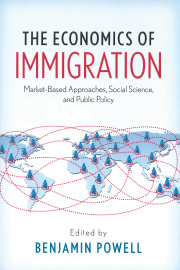April 24 marks the one-year anniversary of Bangladesh’s tragic Rana Plaza factory collapse, which killed more than 1,100 garment workers. In response to the disaster, many people called for increased safety standards in Bangladeshi garment factories. Although well-intended, these calls for increased regulation, if enacted and enforced, would have reduced the welfare of many of the nearly 4 million workers employed in the country’s estimated 4,500 garment factories.
Many readers will reflexively object to this claim and rightly ask why such measures will reduce the welfare of these individuals. We must start by putting Bangladeshi living standards in proper context. Poverty is pervasive in Bangladesh. More than three-quarters of the population lives on less than $2 per day and more than 40 percent live on less than $1.25 a day.
Relative to other available alternatives—subsistence agriculture and provision of household services for the most part—working in the garment industry provides a step up for Bangladeshis. In my recent book, Out of Poverty: Sweatshops in the Global Economy, I document that the Bangladeshi garment factories that were singled out for protest as “sweatshops” by U.S. activists pay, on average, more than the $2 a day, a threshold under which so many of the country’s citizens labor.
Better safety is not free. It comes at a cost to employers. Companies respond to increased costs of using Bangladeshi and other third world labor by shifting to substitutes: labor from other parts of the world and capital in the form of machinery and other automated processes. Passing new safety laws, or more vigorously enforcing existing laws, will jeopardize the jobs that provide opportunities to escape extreme poverty. The shift ends up throwing garment workers back into the lower paid segments of their economies as their factory jobs disappear.
Worker safety standards are much lower in Bangladesh than in the United States because Bangladesh is much less productive. Worker productivity limits compensation. When overall compensation is low, workers prefer the vast majority of their compensation in the form of wages rather than safety or other benefits, because they are desperately trying to feed and clothe their families.
When productivity rises, so does total worker compensation. As workers become wealthier, they demand more of their compensation in the form of safety and other benefits. This process occurred in the United States and can eventually happen in Bangladesh if costly regulations don’t get in the way.
Contrary to common perception, the United States didn’t have the type of regulations we do today—and activists call for in places like Bangladesh—before we developed into a wealthy country. Consider the case of child labor, a topic I explore at length in Out of Poverty.
The United States didn’t pass a national prohibition on child labor until 1938. By that time, the average person’s income was over $10,000 in today’s dollars. But child labor is virtually non-existent in countries with incomes over $10,000 anyway. The law merely codified what was already common practice.
It is true that individual states passed anti-child labor laws earlier, but the scope of the laws were narrow and the laws accomplished little. For example, Massachusetts passed the nation’s first child labor law in 1842, which merely prohibited children under 12-years-old from working more than 10 hours per day. Economists who’ve studied child labor laws and mandatory school attendance laws enacted during the Progressive Era largely find that the laws did little to change rates of child labor.
The same is true of safety regulation. As economic historian Price Fishback put it, “most [safety] regulation appear to have codified existing practices in the relevant industry.” Labor Unions had long agitated for safety laws and child labor laws and other regulations. They were only successful in getting the laws adopted once the process of competition was already causing businesses to adopt these standards anyway.
Returning to the case of Bangladesh, it is unfortunate that more than 1,100 Bangladeshi people died in a factory collapse a year ago. It would be even more unfortunate if emotionally-charged activism in the wake of that tragedy led to regulations that destroy the jobs that are helping millions of others escape extreme poverty. Although we may wish it were not so, sustainable safety improvements come through the market’s process of economic development—not increased regulation.











